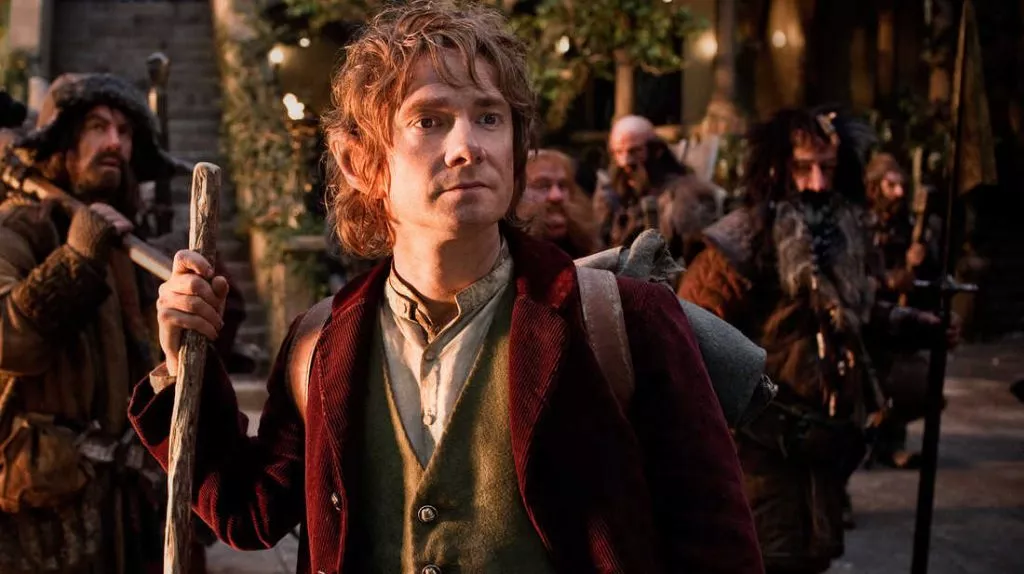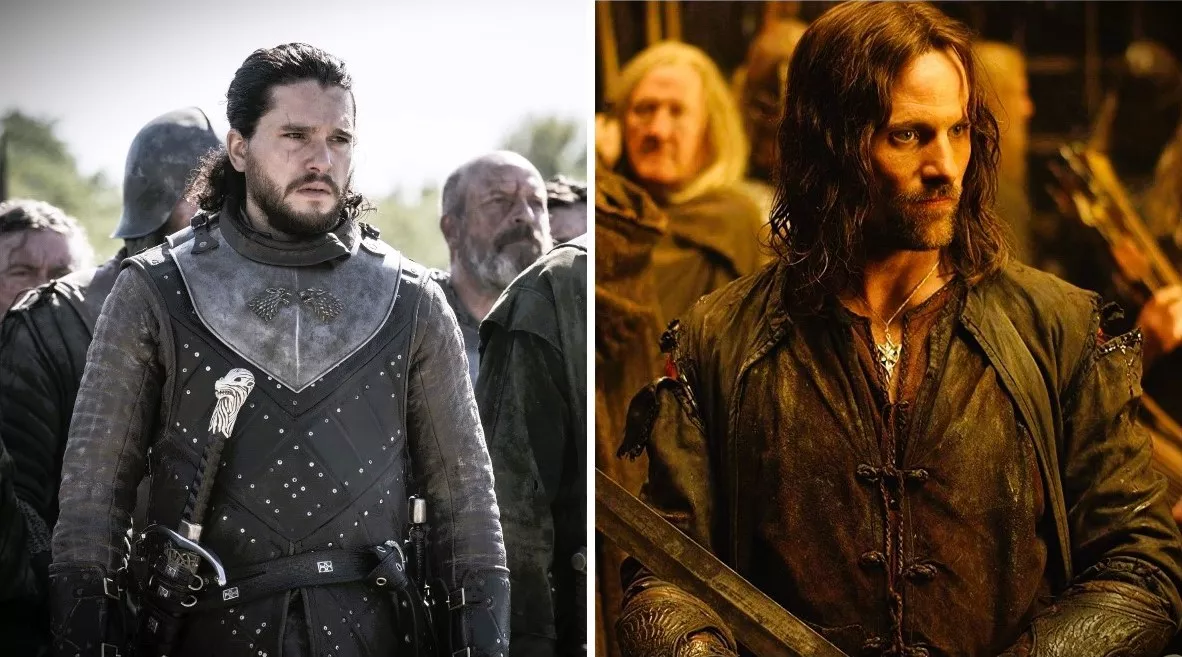Attention, readers! Please note that the following article may reveal important plot details for The Lord of the Rings and Game of Thrones.
It is widely known within the fan community that George R. R. Martin, the esteemed author behind the A Song of Ice and Fire books, which served as the foundation for Game of Thrones, shares a complex relationship with J.R.R. Tolkien and his renowned work, The Lord of the Rings. On one hand, Martin, like countless other fantasy writers of the 20th and 21st centuries, draws substantial inspiration from Tolkien’s writing and openly acknowledges this fact. He has frequently expressed his admiration for The Lord of the Rings, commending Tolkien’s exceptional achievement in accomplishing his creative vision, and recognizing the profound influence the revered author has had on the genre as a whole. In this regard, Martin acknowledges the significant debt he and fellow fantasy writers owe to Tolkien.
On the other hand, Martin has also voiced his distinctive approach to storytelling, highlighting the contrasts between his own writing style and that of Tolkien. He has raised intriguing questions regarding the narrative presented in The Lord of the Rings. In a 2014 interview with Rolling Stone, Martin pondered the intricacies of Tolkien’s optimistic conclusion, wherein Aragorn governs wisely for a hundred years. Martin posed inquiries such as: How did Aragorn establish an effective tax policy? What became of the Orcs still dwelling in the mountains? He pointed out that “real history” is far from being so straightforward. Interestingly, Tolkien himself embarked on a sequel set shortly after Aragorn’s demise but abandoned it due to its excessively dark and gloomy nature, demonstrating his awareness of these challenging issues.
Martin’s fictional realm of Westeros, Essos, and the surrounding lands undoubtedly bears Tolkien’s profound influence, reflecting echoes of Middle-earth. However, simultaneously, Martin’s narrative presents a deliberate departure from Tolkien’s themes and archetypal story structures. This prompts us to inquire: How precisely does Martin’s work manifest these distinctive characteristics and reactions to Tolkien’s literary legacy?
Tolkien’s Influence and Character Parallels in Martin’s World

In the vast realm of George R. R. Martin’s literary universe, Tolkien’s profound influence can be detected in various aspects, starting with the names of people and places. However, it is crucial not to read too deeply into these connections, as Martin often employs familiar names simply for his own amusement. For instance, in Fire & Blood, the book upon which House of the Dragon is based, three generations of Tullys bear names inspired by Muppets—Grover, Elmo, Kermit, and Oscar. While this choice may lack significant meaning, an interesting observation arises if Oscar plays a more prominent role in the planned Fire & Blood Part 2, as his character might exude a rather grumpy demeanor.
Martin’s use of Tolkien’s title “Evenstar” also deserves mention, although its significance may not extend too far. In Tolkien’s work, the title represents Arwen, the “evening star” of the Elves, who forsakes her immortality to marry Aragorn, ultimately becoming one of the last Elves in Middle-earth before her passing. In A Song of Ice and Fire, the title is held by Brienne’s father as a hereditary honor bestowed upon the Lord of Tarth. While this may acquire greater meaning in the future, for now, it serves as a stark contrast between Arwen’s legendary beauty and poor Brienne’s more unassuming appearance.
However, a character name that carries substantial significance in Martin’s universe is Samwell Tarly, evoking the spirit of Samwise Gamgee from The Lord of the Rings. Superficially, the two characters may appear dissimilar—Samwell being of noble birth and self-proclaimed cowardice (despite proving otherwise), while Samwise hails from the working class and exhibits unwavering bravery from the outset (not to mention that Samwell’s weight description stems from the Peter Jackson films, rather than Tolkien’s original depiction).
Beneath the surface, though, both characters fulfill similar roles within their respective narratives. While The Lord of the Rings initially revolves around Frodo, Tolkien himself acknowledged that by the story’s conclusion, Sam emerged as the “chief hero.” Sam, a gardener at the outset, also compiles the history of the War of the Ring after Bilbo and Frodo depart for the Undying Lands, meticulously crafting the Red Book of Westmarch, which encompasses The Hobbit and The Lord of the Rings. Similarly, in A Song of Ice and Fire, Samwell possesses a scholarly inclination from the beginning, and by the fifth and latest book, A Dance with Dragons, he embarks on a journey to Oldtown to become a maester—a learned order responsible for chronicling the histories of the Seven Kingdoms, among other scholarly pursuits. It is conceivable that Samwell will assume a role akin to Archmaester Gyldayn, the “author” of Fire & Blood, recording the wars and conflicts of the Song of Ice and Fire, much like Samwise preserved the history of the War of the Ring.
In this interplay between Martin’s world and Tolkien’s influence, echoes of character parallels and storytelling legacies intertwine, enriching the tapestry of A Song of Ice and Fire.
Echoes of Invented Histories

In the realm of fictional worlds crafted by J.R.R. Tolkien and George R.R. Martin, a shared penchant for incorporating in-universe books adds a fascinating layer of depth. Both authors delight in presenting their novels as reprints of texts from within their respective fictional universes. This creative approach is particularly evident in Martin’s Fire & Blood, a remarkable emulation of popular historical works, complete with contradictory primary sources and the author’s personal opinions sprinkled throughout. In an interview with Dan Jones published in the book, Martin humorously refers to Fire & Blood as “The GRRMarillion,” playfully acknowledging the connection to Tolkien’s The Silmarillion.
The Silmarillion serves as a comprehensive history, or perhaps mythology, of Middle-earth’s First Age. Tolkien had been cultivating this intricate mythos long before he penned The Hobbit. It all began with the tale of Beren and Lúthien, inspired by his own love story with his wife Edith, and fueled by his passion for constructing fictional languages. The world of The Hobbit was only later interwoven into this expansive invented universe. Tolkien had long aspired to publish The Silmarillion, investing years in its creation and continuing to work on it until a few weeks before his passing in 1973. Finally, in 1977, his son and literary executor, Christopher Tolkien, undertook the task of compiling, editing, and publishing the volume.
Like Fire & Blood, The Silmarillion presents an imagined history of a fictional world that predates the main narrative. Although Tolkien did not adopt the same format of a straightforward historical account as Martin did, the book possesses an unmistakable historical quality. Tolkien hints at its nature as a written rendition of a collection of oral traditions, employing phrases such as “it is said among the Elves that…” or “it was said afterwards among the Eldar that…” Moreover, additional fragments, drafts, and stories related to Middle-earth, edited by Christopher, were published in 1980 as Unfinished Tales. Within this collection, contradictory versions of the same tales emerge, showcasing Tolkien’s propensity for revising his ideas, resulting in an ever-evolving narrative landscape. The fluid nature of his writings aligns with Martin’s witty designation of Fire & Blood as “The GRRMarillion.”
In these remarkable parallels, both Tolkien and Martin immerse readers in invented histories, conjuring worlds that transcend the boundaries of their novels. Their deliberate construction of rich mythologies and the incorporation of historical elements lend an unparalleled depth to their works, inviting readers to explore and immerse themselves in the intricate tapestry of their storytelling universes.
Shared Themes in Martin’s Stories

In Martin’s narratives, there are notable recurring themes that draw inspiration from Tolkien’s works. Martin himself revealed to Dan Jones that he followed Tolkien’s template in crafting the plot of A Game of Thrones, initially gathering all characters except Daenerys in Winterfell before dispersing them across his invented world, mirroring The Lord of the Rings’ journey from the Shire to various corners of Middle-earth.
Both authors also explore the impact of war and trauma, despite their divergent personal experiences. Tolkien, a veteran of World War I who endured trench fever and witnessed the loss of comrades, alongside his son Christopher, who served in World War II, delved into the horrors of warfare. In contrast, Martin, a conscientious objector during the Vietnam War, explored the theme from a distinct perspective, having participated in alternative service. Despite their differing backgrounds, both authors shed light on the devastating consequences of conflict.
Interestingly, Martin’s writings delve into battles and injuries with more explicit detail than Tolkien’s works. Nonetheless, both authors navigate the theme of trauma. Frodo, for instance, grapples with the psychological scars of the War of the Ring and the lingering physical pain resulting from his injury at Weathertop, which influences his decision to depart Middle-earth entirely in The Lord of the Rings. In Martin’s universe, characters often seek new identities as a coping mechanism to confront their traumas. Theon endures the imposed identity of Reek by Ramsey Bolton, Sansa (in the books) assumes the identity of Alayne Stone under Littlefinger’s guidance, while Arya, already adept at disguises, voluntarily joins the Faceless Men, who advocate for the abandonment of one’s identity and personality. All three characters confront profound trauma, and the process of reclaiming their true identities is likely to play a crucial role in their journeys in the final two books of the series.
Surprisingly, Martin’s recurring theme of incest also finds a place in Tolkien’s writings. In Tolkien’s tale of Túrin Turambar, first recounted in The Silmarillion and later expanded in The Children of Húrin, the hero inadvertently marries his sister Nienor without realizing their blood relationship. However, it is important to acknowledge that both authors drew inspiration from common medieval legends, particularly Thomas Malory’s 15th-century Le Morte d’Arthur, where King Arthur unknowingly fathers Mordred with his half-sister Morgause. Tolkien’s Túrin also draws inspiration from mythological figures such as the Greek Oedipus. Notably, Tolkien’s narrative emphasizes that the incestuous relationship is accidental, unlike the deliberate and enthusiastic instances portrayed among many of Martin’s characters. If Martin’s books follow a trajectory similar to the TV adaptation, we may witness a more Tolkien-esque example of incest, assuming that, like in the show, Jon Snow and Daenerys Targaryen engage in a romantic relationship before discovering their shared aunt-nephew connection.
Tolkien’s Influence in Martin’s Epic

Jon Snow, among a myriad of characters in A Song of Ice and Fire, stands as a testament to Martin’s blend of history, legend, mythology, and the influence of Tolkien. Beneath Martin’s portrayal of bloodshed, explicit scenes, and gritty realism, one can uncover the presence of traditional tales within the narrative. In A Storm of Swords, for instance, a scene unfolds where a battle-worn knight, devoid of a hand, rescues a warrior damsel from a bear pit. Although the circumstances are nuanced, the essence of the story remains intact.
While Martin challenges the simplistic notion of a benevolent ruler being essential for the prosperity of the realm, at the core of A Song of Ice and Fire lies a Tolkien-esque tale of a returning monarch. Stripping away the political intrigues, betrayals, and petty wars reveals a narrative centered around lords vying for a throne, while a quintessential fantasy character—an unaware boy destined to be the “rightful” king—quietly fulfills his duty of safeguarding the land against a greater threat—the White Walkers. Though the concept of a “rightful” king is explored and questioned throughout the narrative, particularly considering the Targaryen dynasty’s violent conquest, the notion of a chosen monarch, with a mystical connection to the kingdom, resurfaced in the first season of House of the Dragon, penned by Martin himself.
In a scene absent from the books but crafted by Martin for the series, King Viserys I Targaryen imparts a prophecy to his daughter and heir, Rhaenyra. He reveals that Aegon the Conqueror dreamed of a cataclysmic winter heralding the end of the world of men, and asserts that the survival of humanity necessitates a Targaryen seated on the Iron Throne. Exhibiting a catspaw dagger (later employed by Littlefinger to ignite conflict), King Viserys evokes Gandalf’s act of throwing the One Ring into Frodo’s fire to reveal its inscription. As the dagger heats up, an inscription materializes: “From my blood comes the prince that was promised, and his will be the song of ice and fire.”
Book enthusiasts harbor various theories regarding the prophecies in A Song of Ice and Fire and their potential recipients, but this specific revelation seemingly alludes to either Jon Snow (secret son of Rhaegar Targaryen, as unveiled in the TV adaptation and presumably in the books) or Daenerys Targaryen. The narrative weaves a sense of impending doom, unless the promised prince or princess emerges. Thus, within this sprawling saga, replete with its bloodshed, brutality, and suffering, lies the essence of Tolkien’s iconic tale—The Return of the King.

